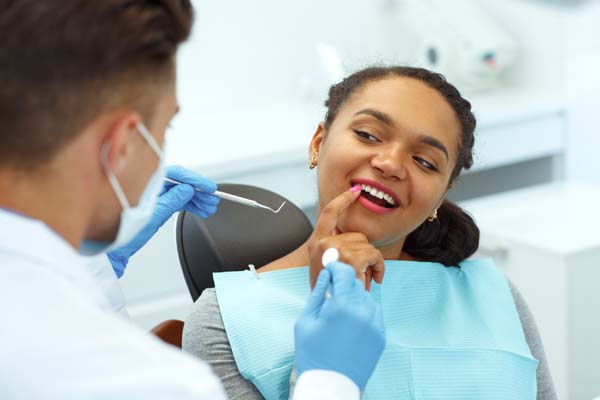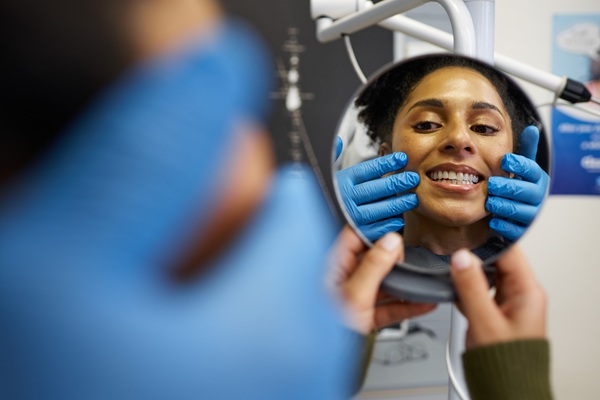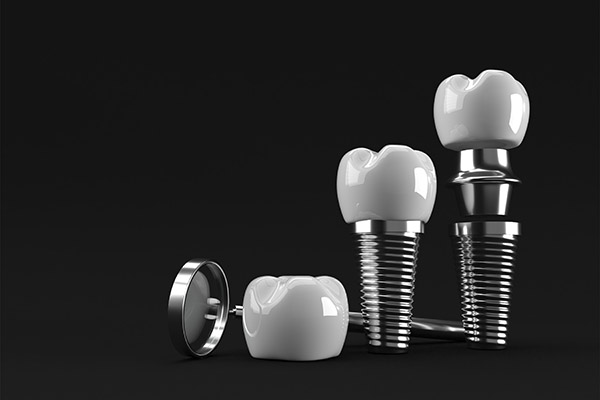Dental Lasers Are a Minimally Invasive Treatment

Unlike dental lasers, traditional dental procedures and tools have a reputation for being rather noisy and uncomfortable and may even be the reason so many people feel discouraged from visiting the dentist. With dental laser technology, less invasive and more comfortable alternatives to traditional dental procedures have been and are being developed. Whether it is for preventative care, treatment of an already-existing issue or cosmetic treatment, lasers offer a compelling alternative to more uncomfortable dental procedures.
Uses of dental lasers
Tooth decay
Dental laser procedures can be a significantly less uncomfortable option for tooth decay removal and have quickly become the desirable option for patients wanting a more gentle option. Traditional drills and methods of tooth decay removal and filling preparation can be loud and painful and often leave patients with bleeding gums and an uncomfortable healing process.
Precise and far less painful, lasers can take some of the discomforts out of preparing and filling a tooth. Far more accurate than a regular drill and gentler on the surrounding area, dental laser procedures can be easier to recover from and have lower rates of gum bleeding or infection.
Gum disease
Soft tissue dental lasers are a low-impact alternative to traditional methods of approaching gum disease or reshaping the gums for cosmetic or other dental procedures. Gentler than other forms of cutting and shaping the gums, like scalpels and razors, dental lasers can produce far less or no bleeding, reducing the need for painkillers, sedatives and post-op care. Dental lasers can also have an antibacterial effect on teeth and gums, helping to kill off bacteria and keep your gums healthy during the healing process.
Biopsy and tissue removal
Patients requiring a biopsy or tissue removal in the throat or mouth have also found benefits to this new form of dental procedure. Traditional scalpel methods for removing soft tissue from the throat and mouth (for instance, in the case of patients with excess tissue, resulting in sleep apnea) often leave the patient with raw, bleeding cuts to take care of. By utilizing lasers in procedures that require soft tissue removal, dentists can give their patients a more comfortable recovery, free from excess bleeding or uncomfortable and elongated scabbing.
Cavity removal and prevention
For even minor cavities and bacterial buildups, dental lasers can help. By targeting pits and vulnerable areas of the tooth, dentists can use dental lasers to kill bacteria and eliminate cavities virtually painlessly. This prospect has massive appeal to those who fear the dentist chair, especially nervous young people who may be fearful of the loud sounds and discomfort of a traditional drill.
Along with addressing small cavities, dental lasers may even be able to help prevent cavities by strengthening your teeth, killing bacteria and promoting strong enamel resistance. As dental lasers advance, so too will this technology. The ability to heat and reinforce outer layers of enamel without damaging or impacting the sensitive inner layers may well be the innovative answer to cavities.
Make an appointment today!
Request an appointment here: https://www.carmelsmilesdentist.com or call Smiles in the Village Dentistry at (317) 218-7985 for an appointment in our Carmel office.
Check out what others are saying about our services on Yelp: Read our Yelp reviews.
Related Posts
Professional dental cleaning are integral for keeping your mouth healthy. They remove plaque and tartar (hardened plaque) that regular brushing and flossing cannot, leaving your teeth and gums refreshed. Maintaining healthy habits that keep your smile bright and strong is essential to make the most of a dental cleaning. Caring for your teeth properly after…
If you are considering implant dentistry or are about to go through the process and want to learn more about it, it is helpful to first understand the basics. Here, we will discuss the various parts that make up an implant dentistry restoration and highlight how they all work together to complete the restoration.An implant…
If you have opted for implant dentistry to replace your missing teeth, you will need to decide on fixed or removable restorations. Read on to learn about implant dentistry and your options. Removable implant-supported restorations can be snapped on and off the abutments anytime there is a need to take off. In contrast, fixed restorations…
Dentures have long provided an effective solution for patients with missing teeth, offering improved oral function and facial appearance. Today, advances in digital dentistry are transforming the way dentures are designed, fabricated, and fitted—offering greater precision, comfort, and natural aesthetics. This innovative approach represents a new era in restorative care, helping patients enjoy a confident…


